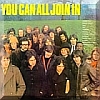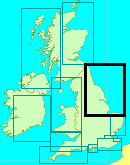You are viewing the expanded version of this Harbour,
for faster browsing
use the regular version here
Blyth Harbour (Port of Blyth)
Courtesy Flag
Flag, Red EnsignWaypoint
Blyth Buoy in approach 55:06'.62 N 001:28'.62 WCharts
Admiralty, 1626Rules & Regulations
No Sailing past entrance to South Harbour, Radio in on Ch12, see website for bye-lawsHazards
Commercial Shipping, Drying Rocks in approach from N. Small wind turbine farm (5) just offshore.Tidal Data Times & Range
HW Approx Dover +0415 MHWS 5.0m, MHWN 3.9m, MLWN 1.7m, MLWS 0.8m (links)This site is designed for slower, roaming broadband connections, like you would get at sea, so it needs JavaScript enabled to expand the text.
General Description
Contacts
Blythe Harbour Control 01670 357020
RNYC 01670 353636 (irregular hours)
If passage making North or South, Blyth represents a real alternative to entering the River Tyne. You must have this year's digital chart for this particular coast as the buoyage and lights are constantly changing, the chart supplied (top right) with these notes is this year's chart. and, if you purchase the latest UKHO chart be sure to apply any script ammendments which accompany it because last year's chart is different and the year's before is different to that!
Serious stocking up of provisions is no easier to achieve in any of the River Tyne locations. The South Harbour at Blyth being close to the entrance with deep water and no locks to contend with allows comings and goings to be fuss free.
Blyth Harbour lies about 7 miles north of Tynemouth and has had a very commercial recent history. In the earlier parts of the 20th century Blyth was the busiest coal port in Europe.
With the decline of coal the port has diversified a bit, and the main trade was connected with the Alcan aluminium works at Lynemouth. Raw materials came in and aluminium ingots left. Unfortunately the works closed in 2012 though the three large red silos remain as a visible land mark. Other materials handled at the port include chemicals and fertiliser, plywood, paper, scrap metals and grain. The port has Ro-Ro facilities and a container terminal, while the fish quay handles the local trawlers and sometimes visitors from further afield.
Pleasure boating has been accommodated here for a long while too. The Royal Northumberland Yacht Club has its base in the South Harbour, where they have laid pontoons and constructed a small marina, with their club ship "Tyne" as the centrepiece. Visitors are truly made most welcome at the Marina and the Club.
It has deep water and is easy to enter in all conditions except in very strong winds from the east and south-east. In common with most of the other harbours along this coast strong onshore winds kick up breaking seas in the close approaches, making entry dangerous for small craft.
From a practical stocking up point of view the nearest decent shops are in the town about a mile away, where virtually all the normal town facilities will be found too. Transport is not too brilliant with no railway station but a reasonable bus service.
Approach
Approaches to Blyth Harbour are clear and straightforward from the South.....
We have been told the all wind turbines on the Eastern pier and the two on the North Spit which were a good landmarks have been taken down At night the lighthouse at the end of the East Pier (Fl(4)10s) has a good range, and approaches from the South are covered by its white sector (safe) sector. See full pilotage details:
The green starboard hand Blyth Buoy has been removed.
Any approach from the North is complicated by rocky patches projecting seawards from the East Pier, The Sow and The Pigs. It is necessary to maintain at least half a mile's offing to clear these, and even a high water it is not safe to attempt to cross them. The 2 wind turbines that were close inshore near the north spit have now been removed.
Also be aware of the huge weather station mast three miles ENE of Blyth which has an all round light flashing U (di di dah) which should not be confused with the flashing light on a cardinal mark. A 5 turbine "Blyth Demonstrator Wind Farm" has been established just to seawards of this mast, and we are told that the Cardinal buoys guarding this (see approach chart) have now been removed.
At night the dangerous drying rocky areas to the NE of the harbour are covered by the red sector (F.R) of the East Pier Lighthouse, the turn in towards the harbour not being made until this light disappears and the normal characteristic flashing white light can be seen.
The old buoyage around these shore reefs has been removed and there is now only a seasonal yellow mark laid off the Sow and Pigs.
Perhaps the safest way to avoid all doubt if approaching from the North is to stay outside the 15 m (at CD) depth contour (with the weather mast and new windfarm to seawards in 30 m +) until the harbour entrance bears due West.
Whichever direction you come from, in the closer approach it is necessary to call Blyth Harbour Control on VHF channel 12 for clearance to enter (same when leaving, clearance necessary). A link to the harbour authority's website is provided below and the harbour Office telephone number is 01670352678
http://www.portofblyth.co.uk/index.php?option=com_frontpage&Itemid=1
Entry is straightforward between the piers and there are leading marks that line up on 324°T. Be aware of a submerged training wall that commences shortly after you pass the outer West Pier end. The bitter end of it is marked by a dolphin with a red light. You should be keeping to the starboard side of the channel anyway.
Sailing within the harbour is forbidden once past the entrance to the South harbour on your port hand side. A foray deeper into the harbour will have to be tackled under engine. Most visiting small craft will make straight for the visitors pontoon in the South harbour.
When commencing your turn into the South Harbour do it from the starboard side of the the main channel and leave enough room for vessels exiting.
Berthing, Mooring & Anchoring
There is no commercial marina here, but visiting yachtsman or motorboaters entering the South Harbour.....
.....will see the pontoons belonging to the Royal Northumberland Yacht Club, who maintain visitors berths. Berthing is on the outside of the most northerly pontoon... ie the first one you come to.
The charges (2022) are £2.50 per metre per day with a minimum charge of £17.00; they are payable at the club ship. There are also BACs details for payment on their website. For a short stop of five hours or less there is a charge of £10.00.
The Club itself has a strong cruising tradition and will provide a welcome for fellow sailors.
A link to the club's website is provided below:
It is possible to push much deeper into the harbour (under engine), and to pass all the commercial docking areas. The drying the River Blyth connects with the harbour in the ship turning basin, and small craft can nose further in where they will find drying moorings belonging to the River Blyth Boating Association. This club also welcomes visitors.
Updated April 2022
Facilities
South Harbour
Water and electricity are available on the club pontoons, electricity is operated by a prepayment card purchased from the club. Good toilets and showers are available at the club ship.
There is no alongside fuelling up facility, but small quantities of diesel can be obtained in cans by contacting the club steward. Otherwise it's down to local petrol stations which are not close.
For the boat, various services can be found locally including chandlery and marine engineering. Either check the directory or enquire at the club.
From the South Harbour the town of Blyth is about a mile away, thus walkable. The bus to town passes the South Harbour entrance should you be feeling lazy, and could be extremely handy if coming back laden down with shopping. The town is substantial and you will find banks, cashpoints, supermarkets and all manner of shops. The Keel Row shopping centre houses most of the High Street names, while next door the visitor will find a market held on Tuesdays, Fridays and Saturdays. The visitor may be surprised to find a disused lighthouse actually in the town.
The nearest mainline railway station is at Newcastle, and bus services there run regularly, while the nearest airport is just outside Newcastle.
History
The port of Blyth dates from the 12th century, but the development of the modern town only began in the first quarter of the 18th century. The main industries which helped the town prosper were coal mining and shipbuilding, with the salt trade, fishing and the railways also playing an important role. These industries have largely vanished, but the port still thrives, shipping paper and pulp from Scandinavia for the newspaper industries of England and Scotland.
The town was seriously affected when its principal industries went into decline, and it has undergone much regeneration since the early 1990s. The Keel Row Shopping Centre, opened in 1991, brought major high street retailers to Blyth, and helped to revitalise the town centre. The market place is currently being redeveloped, with the aim of attracting further investment to the town. The Quayside has also seen much redevelopment and has been transformed into a peaceful open space, the centrepiece of which is a sculpture commemorating the industry which once thrived there. On the opposite side of the river are the nine wind turbines of the Blyth Harbour Wind Farm which were constructed along the East Pier in 1992. They were joined in 2000 by Blyth Offshore Wind Farm, which is composed of two turbines situated 1 kilometre (0.6 mi) out to sea.
Industry and commerce
With the running down of the coal mining and shipbuilding industries, Blyth largely exists today as a dormitory town in the commuter belt serving Newcastle and North Tyneside. However, its port still remains a major industry in the area, handling over 1.5 million tonnes of cargo annually. Its main trades are forest products, such as paper, pulp and timber, unitised cargo (containers and RoRo) and the import of materials used in the production of aluminium. It also handles the import of a variety of stones and metals. The port has twice weekly liner connections with the Netherlands, Germany, Belgium and France as well as weekly connections with Latvia, Russia, Sweden and Denmark; a fortnightly connection is made with Finland, while connections with Indonesia and Malaysia are monthly. The port is operated by Port of Blyth, which is the operating division of Blyth Harbour Commission. Port of Blyth is a trust port, which means that it is governed by its own local legislation under the control of an independent board; there are no shareholders and therefore no dividends to support, which allows any surplus to be reinvested in the port.
Renewable Energy
Several renewable energy projects have been established in Blyth. In 1992, Blyth Harbour Wind Farm was constructed along Blyth's East Pier. Consisting of nine wind turbines and with a maximum capacity of 2.7 megawatts, it can provide enough electricity for over 1,500 homes.[40] It was joined in December 2000 by Blyth Offshore Wind Farm, which is composed of two turbines situated 1 kilometre (0.6 mi) out to sea. At 2 megawatts each, they were, when installed, the largest in the world.
The New and Renewable Energy Centre (NaREC) is one of five centres of excellence set up by the North East’s regional development agency, One Northeast. It was established in 2002 and is based at Eddie Ferguson House, by the Quayside. Its purpose is to develop and test new energy technologies and equipment that will assist in the transition to a low-carbon economy.
Urban Regeneration
Commercial developments in the town centre have also helped to revitalise Blyth. Opened in 1991, the Keel Row Shopping Centre has brought many large high street retailers to the town. Several streets and many derelict buildings, including the old council offices, were cleared away to make way for the development. Adjacent, is the thrice weekly market which is held on Tuesdays, Fridays and Saturdays. Plans to redevelop the market place have been approved, which will see trees, water features, a central feature and a performance area introduced. The project will cost an estimated £2.4 million, and its aim is to attract people to the market area when the market is closed, and to bring further investment to the town. However, concern was raised by Councillor Alisdair Gibbs-Barton, who said that the market place was beginning to resemble a park, and that more trade should be being encouraged.
Landmarks and places of interest
The "Spirit of the Staithes" sculpture on Blyth's Quayside was unveiled by Princess Anne on 28 May 2003. As part of the overall regeneration of the Quayside, it was commissioned by Blyth Valley Council in conjunction with Northern Arts and created by the artist Simon Packard. Standing 15 metres (50 ft) high and 7 metres (22 ft) wide, it represents the heritage of coal distribution in Europe, an industry in which Blyth was the largest exporter.
The "High Light" lighthouse is one of Blyth's oldest structures. It stands to the rear of Bath Terrace and is 18.74 metres (61.5 ft) tall. Built in three stages, the first section was constructed in 1788 to a height of 10.66 metres (35 ft). A further 4.26 metres (14 ft) was added in 1888, and the final 3.82 metres (12.5 ft) was added in 1900. It was deactivated in 1985 and listed Grade II on 15 July 1987.
On the north side of the River Blyth are the remains of the railway coal staithes which featured in the chase scene at the end of the 1971 film Get Carter, starring Michael Caine.
The text on this HISTORY page is covered by the following licence
http://en.wikipedia.org/wiki/Wikipedia:Text_of_the_GNU_Free_Documentation_License
Eating, Drinking & Entertainment
If moored at the Marina most yachtsmen won't get further than the club ship belonging to the Royal Northumberland Yacht Club, as the members have a reputation for being extremely friendly and welcoming. Here the visitor can partake of the bar, and the steward can provide bar meals and snacks. For a more formal sitdown dinner for several people he will need a little notice.
Otherwise it's a matter of exploring the town and sampling what's available. As usual we provide a couple of links for further investigation:
Pubs:
http://www.beerintheevening.com/pubs/results.shtml/el/Blyth%3BNorthumberland/
Eating Out:
Links
|
Your Ratings & Comments









